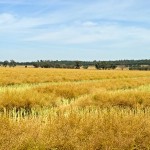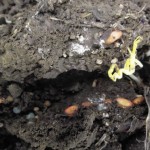
The best time to swath canola
The Canola Council’s recommendations on timing have changed. Keep up to date with the latest swathing guidelines

Three ways to sample
If you don’t want any nasty surprises later, make sure your sample is a good representative of the grain you plan to sell

Straight talk on straight cutting
It’s not for everyone, but some farmers are seeing benefits from straight cutting their canola

Glyphosate-resistant kochia in Manitoba
Find out what you need to know about new reports of glyphostate resistance across the Prairies

Fertilizer toxicity can kill a seed
Too much fertilizer too close to the seed can create a toxic environment. Here’s how to recognize the problem if you have it

Swede midge life cycle
Understanding the swede midge’s life cycle is the first step on the way to controlling this new pest

Swede Midge: a potential ‘perfect storm’
There’s a new canola pest in town. It’s hard to spot and hard to control, but the damage it causes is easy to detect

Watch for sunflower diseases
Farmers interested in planting sunflowers in 2014 should be ready to protect them from sclerotinia head rot and sunflower rust
Seeding with thousand kernel rates
Agronomists promote using thousand kernel rates to calculate seeding rates. But many farmers still haven’t picked up the habit

Intensify production by regulating growth
Plant growth regulators can give you higher yields, with lower crop height

